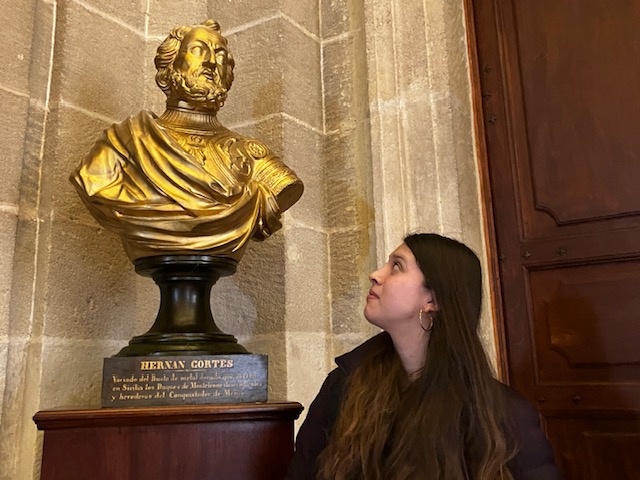
A Tale of Two Colonies
It was during my second day in Seville, while getting a tour of the city center, that I found myself face to face with Christopher Columbus and Hernan Cortes. There they were, carved proudly, beautifully onto the white marble that decorated the University of Seville. As the tour guide explained how this building used to be a tobacco factory that transformed the stolen goods from the Americas into profits for the Spaniards, I suddenly wondered if I had made the right decision in traveling to Spain.
As a Mexican-American, I grew up in the cultures of two former colonies and their colonizers. I spoke Spanish and English fluently. I celebrated Día de Muertos and Thanksgiving. Over the course of the years I was taught to think critically about the histories of my countries and gain a better understanding of how they’ve turned into what they are today. I wondered how two former colonies could grow dramatically different, one turning into its own empire while the other struggling with high poverty rates and migration. My identity as a bicultural and bilingual woman has shaped the way I see the world, but I can’t say that I ever truly understood the effects of colonialism until I found myself literally staring at it in the eyes.
It’s easy to read about and discuss these issues in the classroom, where you can detach and treat it solely as an academic issue. But on a study abroad program where you have to immerse in a new place, the classroom is no longer constricted to four walls and the lessons don’t just stay in the textbook. A few days ago, during my Cultural History of Spain course, we took a trip to the General Archive of the Indies, a UNESCO World Heritage site housing archival documents of the Spanish empire and its colonies. Stepping into it felt like a part of me was coming home and being reunited with loved ones. This was the place where all of the goods from the Americas came to be documented, this was where my history and my people were preserved. Again I was greeted by various statues and portraits of Christopher Columbus and Hernan Cortes. But now, I could look them in the eyes, daring them to tell me that I wasn’t worthy of entering their land.
I find it a bit ironic that the first two places I chose to visit in Europe, out of all forty four countries, were England and Spain. Though both places seep with colonial history, as a Mexican-American I recognize the value and nuance of stepping on their cobblestone streets. In London, I admired the Palace of Westminster and The Golden Hinde, a replica of the first ship that sailed the world. In Seville, I ran my hands along the stone walls that trapped Jewish and Muslim, caressing ancient ruins that my ancestors could only dream about. As I walk these streets, I think about the words Rodolfo Gonzales wrote, “I am the sword and flame of Cortes the despot/ And I am the eagle and serpent of the Aztec civilization” in his work “I Am Joaquin”. This land, this history, is mine just as much as it is the history of those who have welcomed me into their homes with open arms. I am home.

